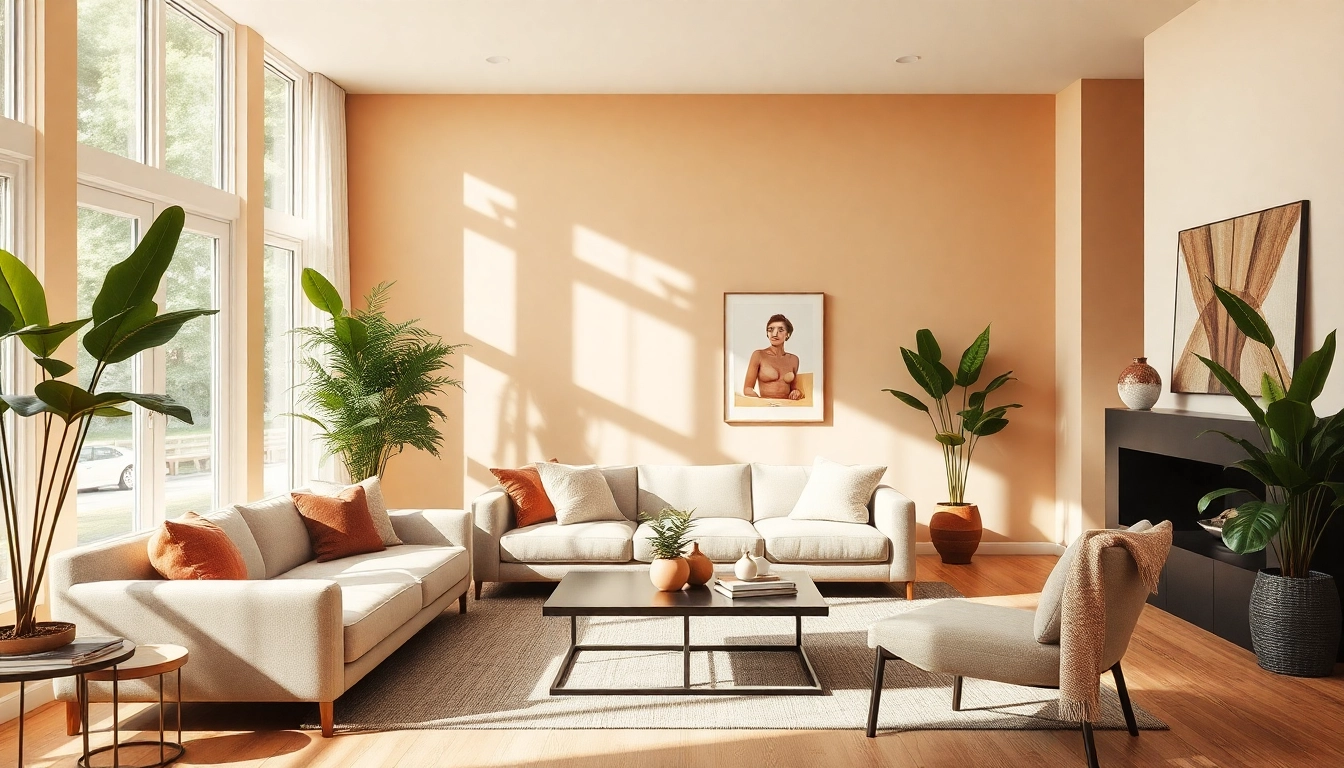Transforming your living space through thoughtful interior design can create a harmonious environment that reflects your style and meets your needs. When we talk about the entire interior of your home, we refer to a holistic approach that encompasses color schemes, furniture choices, lighting solutions, and personalized decor elements. In this comprehensive guide on entire interior design, you will discover in-depth strategies, practical tips, and expert insights that will help you create a cohesive aesthetic throughout your home.
Understanding the Concept of Entire Interior Design
What is Entire Interior Design?
Entire interior design is the art of creating a complete and harmonious living space that reflects a particular style or theme. This design approach transcends conventional room-by-room decor—encompassing all areas of the home and ensuring that each element works in synergy. It focuses on the intricate details of how spaces interact and influence one another, resulting in a seamless flow from one area to another.
Benefits of a Cohesive Space
Investing in an entirely cohesive interior design provides numerous benefits, including:
- Aesthetic Harmony: A unified design language ties different spaces together, enhancing the overall aesthetic appeal.
- Improved Functionality: Thoughtful design integrates functionality with style, making spaces more enjoyable and usable.
- Enhanced Value: Homes with well-thought-out interiors command higher market values due to their polished appearance and livability.
- Personal Expression: An entire interior design allows you to express your personality and lifestyle preferences through the cohesive selection of color, furniture, and decor.
Key Components of Interior Design
Understanding the key components helps you create a coherent interior design. Here are the major elements:
- Color Palette: Choosing a consistent color palette that flows from room to room is fundamental in achieving design cohesion.
- Furniture: Furniture selection and arrangement play crucial roles in determining how inviting and functional your spaces will be.
- Lighting: Adequate and varied lighting not only enhances mood but highlights key design features throughout the home.
- Textiles and Accessories: Fabrics, artwork, and decor items should align with your chosen style to reinforce the overall design theme.
Choosing Colors for Your Entire Interior
Color Theory Basics
Color theory is foundational in interior design, guiding the selection of hues that coexist harmoniously. Key principles include:
- Color Wheel: Understanding the relationships between primary, secondary, and tertiary colors helps in creating appealing combinations.
- Warm vs. Cool Colors: Warm colors (reds, oranges, yellows) evoke energy, while cool colors (blues, greens, purples) promote calm.
- Contrast and Balance: Using contrasting colors can create drama, while analogous colors provide a serene flow.
Popular Color Palettes
Several timeless color palettes can enhance the beauty of your entire interior. Here are a few examples:
- Neutral Tones: Whites, grays, and beiges provide a timeless backdrop that complements various furnishings and styles.
- Pops of Color: Incorporating bright colors as accents can breathe life into neutral spaces without overwhelming them.
- Monochromatic Schemes: Using different shades of a single color can create depth and interest.
Creating Flow with Color
To ensure that your interior flows seamlessly, consider the following tips:
- Transition Colors: Employ transition colors in adjoining spaces to create a visual connection.
- Accent Walls: Use accent walls strategically to break up colors without disrupting harmony.
- Consistency in Finish: Consistent finishes across colors (e.g., matte, gloss) contribute to a unified look.
Furniture Selection for Entire Interiors
Types of Furniture for Different Spaces
Your choice of furniture should correspond with the intended use of each space in your home. Here are several types:
- Living Room: Sofas, chairs, and coffee tables create a welcoming area for relaxation and socializing.
- Dining Area: Tables and dining chairs must be both functional and stylish to accommodate gatherings.
- Bedroom: Beds, dressers, and nightstands should promote comfort while offering practical storage solutions.
Balancing Form and Function
While aesthetics are important, function should not be compromised. Here are key considerations:
- Size and Scale: Ensure furniture is appropriately sized for the room to avoid overcrowding and promote movement.
- Comfort: Choose ergonomically designed furniture for longevity and usability.
- Versatility: Opt for multi-functional furniture pieces—like storage ottomans or expandable dining tables—to optimize space.
Tips on Placing Furniture
Thoughtful furniture placement can dramatically enhance the functionality and flow of a room:
- Focal Points: Position furniture to highlight natural focal points like fireplaces or large windows.
- Traffic Flow: Maintain clear pathways by allowing 18-24 inches of space for walkways.
- Conversation Areas: Arrange seating to facilitate conversation, usually in a U-shape or circular configuration.
Lighting Solutions for a Complete Interior
Understanding Different Lighting Types
Effective lighting involves a blend of various types:
- Ambient Lighting: General illumination that lights the entire room.
- Task Lighting: Focused lighting for specific activities, such as reading or cooking.
- Accent Lighting: Decorative lighting that highlights artwork or architectural features.
Layering Light for Ambiance
Combining these different lighting types creates an inviting atmosphere. Here are some suggestions:
- Dimmer Switches: Install dimmer switches for adjustable mood lighting.
- Varied Sources: Use a mix of floor lamps, table lamps, and sconces to enhance depth.
- Natural Light: Maximize the use of natural light through window treatments that allow sunlight while ensuring privacy.
Eco-Friendly Lighting Options
Consider sustainable lighting solutions to reduce energy consumption:
- LED Bulbs: They consume less energy and have a longer lifespan than traditional bulbs.
- Solar-Powered Lights: Ideal for outdoor settings, these lights use renewable energy.
- Smart Lighting: Smart bulbs can be programmed to optimize energy use throughout the day.
Decorating Tips for Your Entire Interior
Accessorizing with Purpose
Accessories are the finishing touches that make your interior unique. Consider the following:
- Less is More: Select a few impactful pieces rather than overcrowding your space.
- Meaningful Items: Choose decor that tells your story, whether through art, photographs, or souvenirs.
- Seasonal Updates: Change accessories based on seasons to freshen up your space.
Using Textiles to Enhance Spaces
Textiles can soften hard surfaces and add warmth. Think about:
- Layering Textures: Combine different textures, such as cotton, wool, and leather, for visual interest.
- Rug Placement: Use area rugs to define spaces within an open floor plan.
- Curtains and Drapes: Opt for fabrics that complement the color palette and style.
Artwork and Personal Touches
Art and personal touches add character. Here are tips for incorporating these elements:
- Gallery Walls: Create a gallery wall with a mix of art styles and sizes for visual appeal.
- Personal Collections: Display collections to reflect your interests.
- Positioning Art: Ensure art is hung at eye level for maximum impact.
In conclusion, mastering the concept of entire interior design involves understanding the interconnected aspects of color, furniture, lighting, and accessories. By integrating these elements thoughtfully, you can develop a home that not only looks cohesive but also feels like a seamless extension of your personality. Embrace the potential of your entire interior, and enjoy the process of creating a space that truly represents you.



